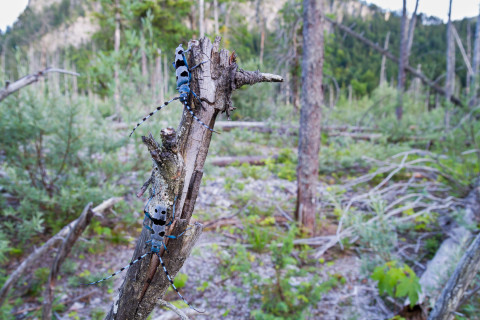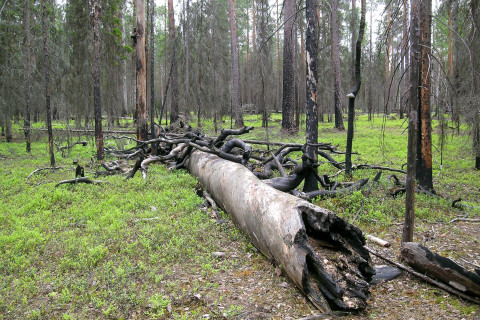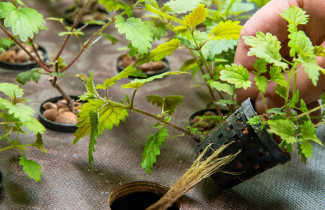Deadwood decomposing in forests not only maintains a rich biodiversity, but also affects the circulation of carbon in forests and the atmosphere. The speed at which deadwood decomposes in forests depends on the climate, as well as on fungi and insects. An international research team has now determined the annual contribution made by deadwood to the global carbon cycle and quantified the importance of insects in the decomposition of wood for the first time. The findings were published in Nature.
Living trees absorb a considerable amount of carbon dioxide from the atmosphere and therefore play an important role in the protection of our climate. Little is known about the role of dead trees in the global carbon cycle, though. The decomposition of wood and the recycling of the nutrients it contains are among the most important processes to take place in forests.
How much carbon is released from decaying wood worldwide? What role do insects play in this process? These questions have now been studied in a global research project, with the School of Forest Sciences at the University of Eastern Finland among the research partners.
Experiments conducted in dozens of locations on six continents
Experiments were conducted at 55 forest locations on six continents. All in all, 50 research groups worldwide completed the three-year experiment, sometimes under exceptionally difficult conditions. It was necessary to use elaborate measures to protect some areas from elephants. One area was lost to a forest fire and reconstructed, while another area was flooded. In Finland, the experiment was conducted in North Karelia, eastern Finland.
Researchers laid out wood from more than 140 tree species to assess the influence of the climate on the rate of decomposition. Half of the wood was placed in mesh cages. These cages prevented insects from being involved in the decomposition and allowed quantifying their contribution to wood decomposition.
The collected data demonstrates that the rate of decomposition and the contribution of insects are highly dependent on the climate, and increase as the temperature rises. Higher levels of precipitation accelerate the decomposition in warmer regions and slow it down in regions where the temperatures are lower.
Forests differ in how they release carbon
“On the basis of the experiment, we were able to model the role that deadwood plays in the global carbon cycle. According to our report, some 10.9 giga-tons of carbon are released from deadwood worldwide every year. In this context, part of the carbon is absorbed into the soil, while another part is released into the atmosphere. This emphasises the role of forests, and their deadwood, in the natural global carbon cycle of ecosystems. However, decomposition doesn’t proceed similarly in all forests,” says Professor of Forest Ecology Jari Kouki from the University of Eastern Finland.
“The results show that decomposition in temperate and boreal forests – like in Finland – is considerably slower than in the tropics. In conditions like we have in Finland, deadwood can store carbon for hundreds of years before it decomposes. This makes the northern forests a potential long-lasting storage for global carbon,” Kouki notes.
Tropical forests account for more than 90 per cent of the world’s carbon emissions originating from deadwood due to their high wood mass combined with their rapid decomposition processes. Insects account for almost one third of wood decomposition, although this is mostly confined to the tropics. In boreal and temperate forests, the contributions made by insects are small, though. However, the situation may change when climate change proceeds.
Global change can influence global carbon and nutrient cycles
The study highlights the role played by deadwood in the global carbon cycle and the functional importance of insects in the decomposition of wood. The study also provides valuable new insight into the global modelling of carbon cycles.
“At a time of global change, we can see some dramatic declines in biodiversity and changes in climate. This study has demonstrated that both climate change and the loss of insects have the potential to alter the decomposition of wood, and therefore, the carbon and nutrient cycles worldwide,” Dr Sebastian Seibold from Munich Technical University, the lead author of the article, points out.
For further information, please contact:
Professor of Forest Ecology Jari Kouki, University of Eastern Finland, School of Forest Sciences, tel. +358 50 538 5373, jari.kouki(uef.fi)uef.fi
Publication:
Seibold et al (2021): The contribution of insects to global forest deadwood decomposition. In: Nature. DOI: 10.1038/s41586-021-03740-8, published 1st Sept 2021.





